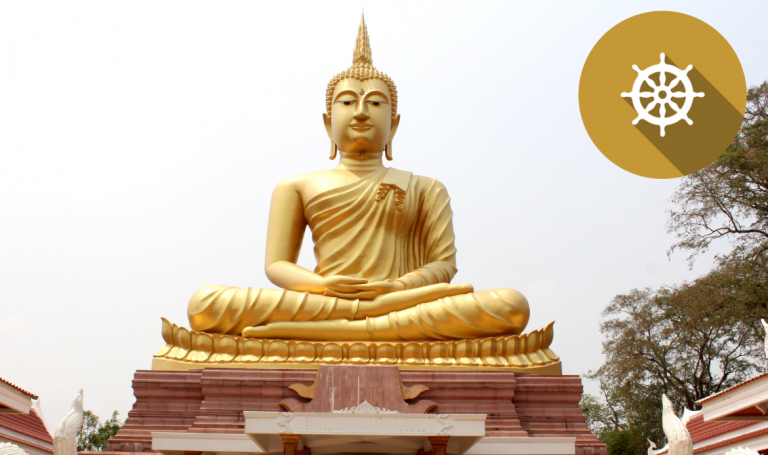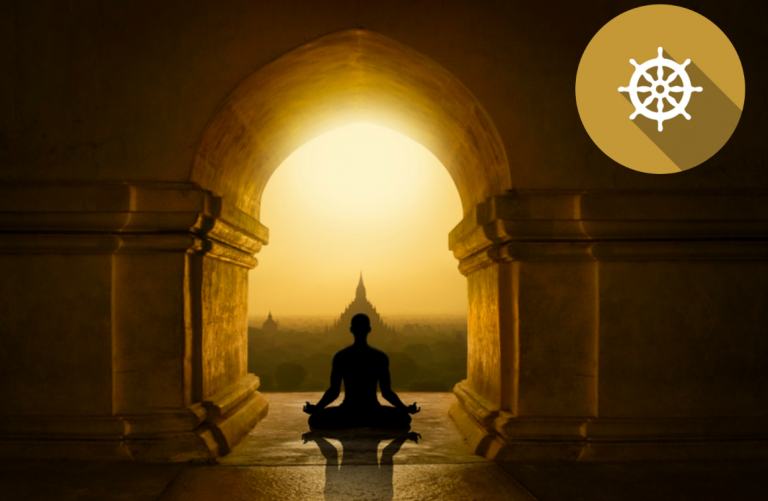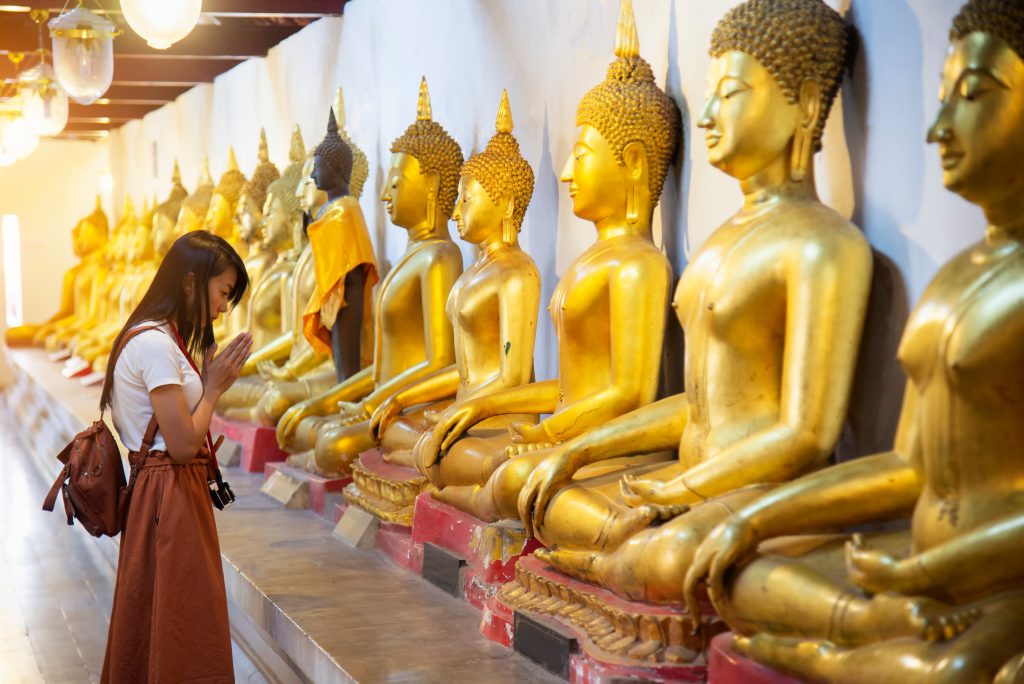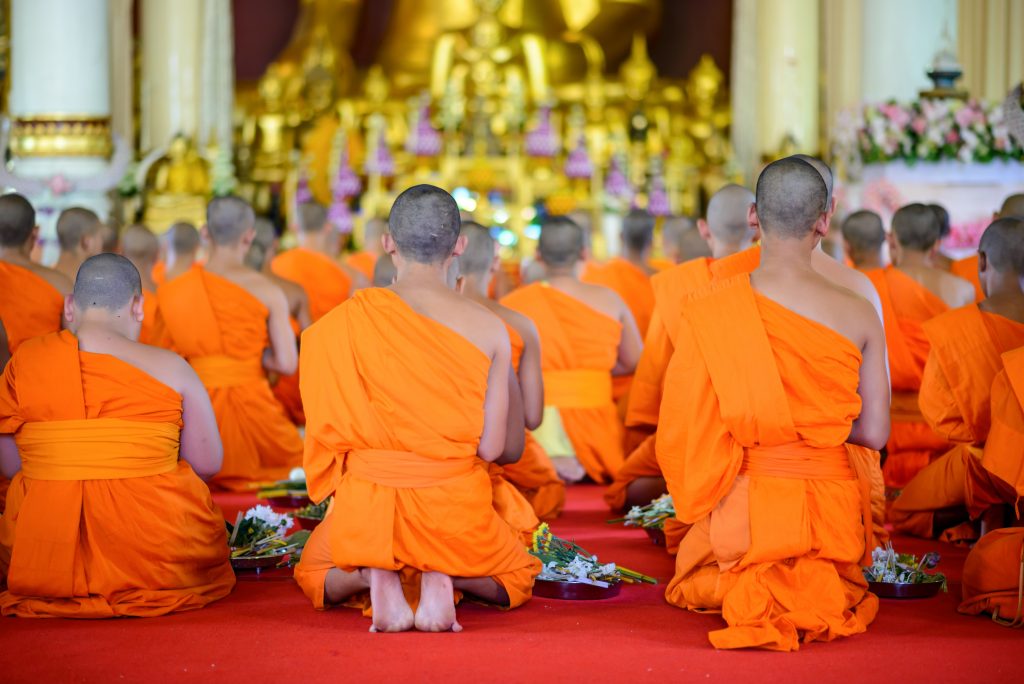Buddhismen / Buddhism
Buddhism originated 2,500 years ago in Northern India. The religion started with a man named Siddharta Gautama.
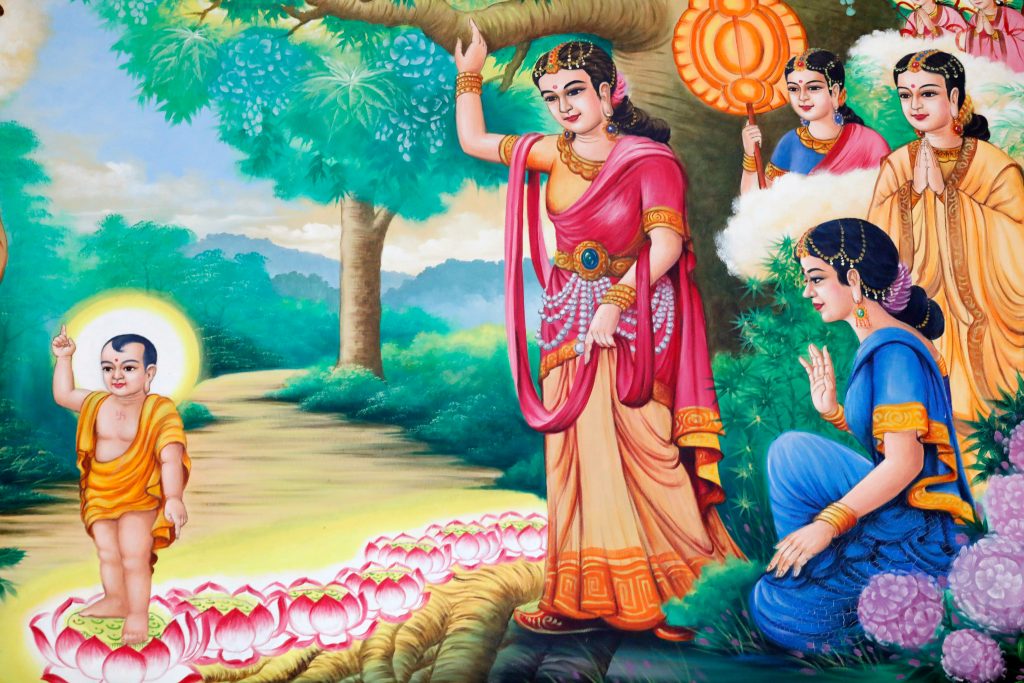
Buddha
Siddharta Gautama was a prince. He came from a rich family and lived a good life in a palace. One day outside the palace he saw a sick person, an old person, a dead person and an ascetic. An ascetic is a person who chooses to live a simple life. What the prince saw outside the palace made him decide to move out of the palace, leaving his wife and his newborn child. He wanted to live like an ascetic. Ascetics believe they would become wiser and understand more if they live simple lives. Siddharta Gautama visited several ascetics and learned a lot from them. He frequently fasted and meditated.
To meditate means that you sit absolutely still and try not to think about anything. After living as an ascetic for six years, Siddharta Gautama still didn’t think he had found any answers and he was not much wiser. He then decided to sit down under a tree, and not to move until finding some wisdom. After four days under the tree he suddenly realized how the world functioned. “I have found freedom”, he thought. Then he became a Buddha. Buddha is an Indian word, meaning “one who understands”.
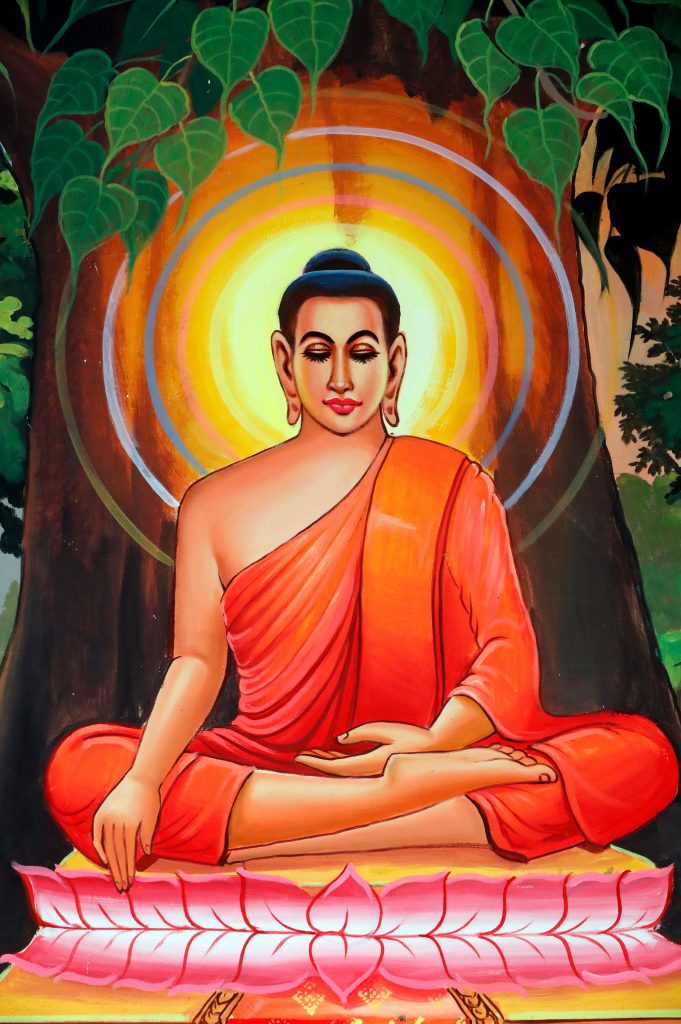
Faith
Buddha was no god, but a wise person who understood a lot. Buddha taught people about the importance of being nice and honest in life. Buddha’s teachings lived on after his death. This is the guidance known today as Buddhism. That teaching is also called dharma.
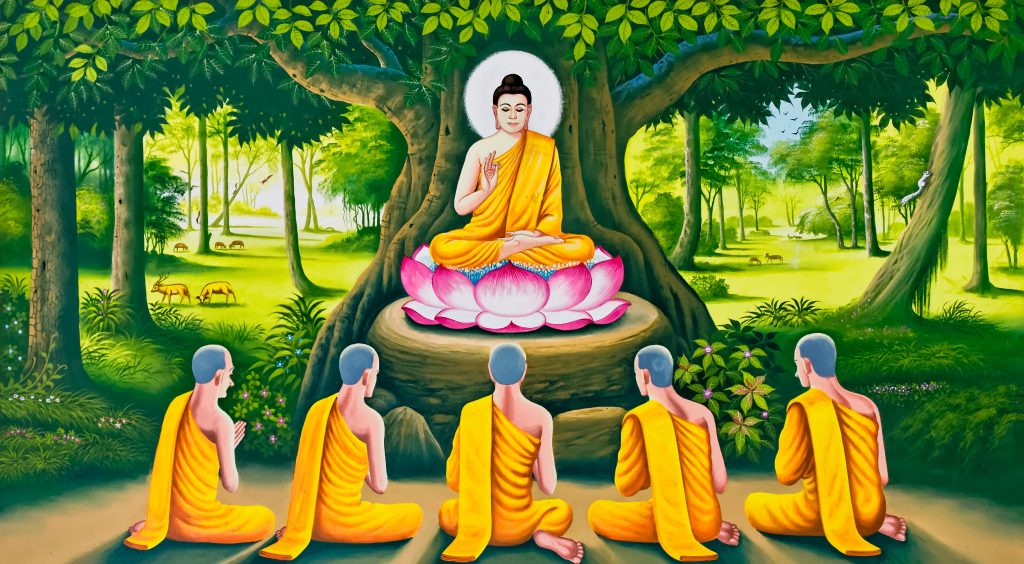
Buddhists believe in reincarnation. They believe that you will be reborn when you die, and what you do in this life determines your next life. If you are not good in this life, there will be struggles for you in your next life. This teaching is called karma.
Buddha told people that there were many problems and suffering in our world, and that many people were living poorly. Buddha also said that it was possible to do something about all the suffering. People could try to become more understanding, be nicer, stop hating, stop thinking about bad things and avoid being greedy and always wishing for more. If people achieved that, they would become free and have a good life. This freedom is called nirvana. Nirvana is a complete liberation from suffering and rebirth. It is a state of happiness, harmony, total freedom and clarity beyond words.

The Four Noble Truths
Buddha’s guidance can be summarized in four teachings. They define the reasons for the amount of suffering among people, but also how that can be changed.
- Everything contains pain and suffering.
- There is suffering because people are greedy or discontent. People always crave more.
- If people stop being greedy and wanting more, all the pain and suffering will disappear.
- If one wishes to end everything that causes pain, then one must follow the Eightfold Path.
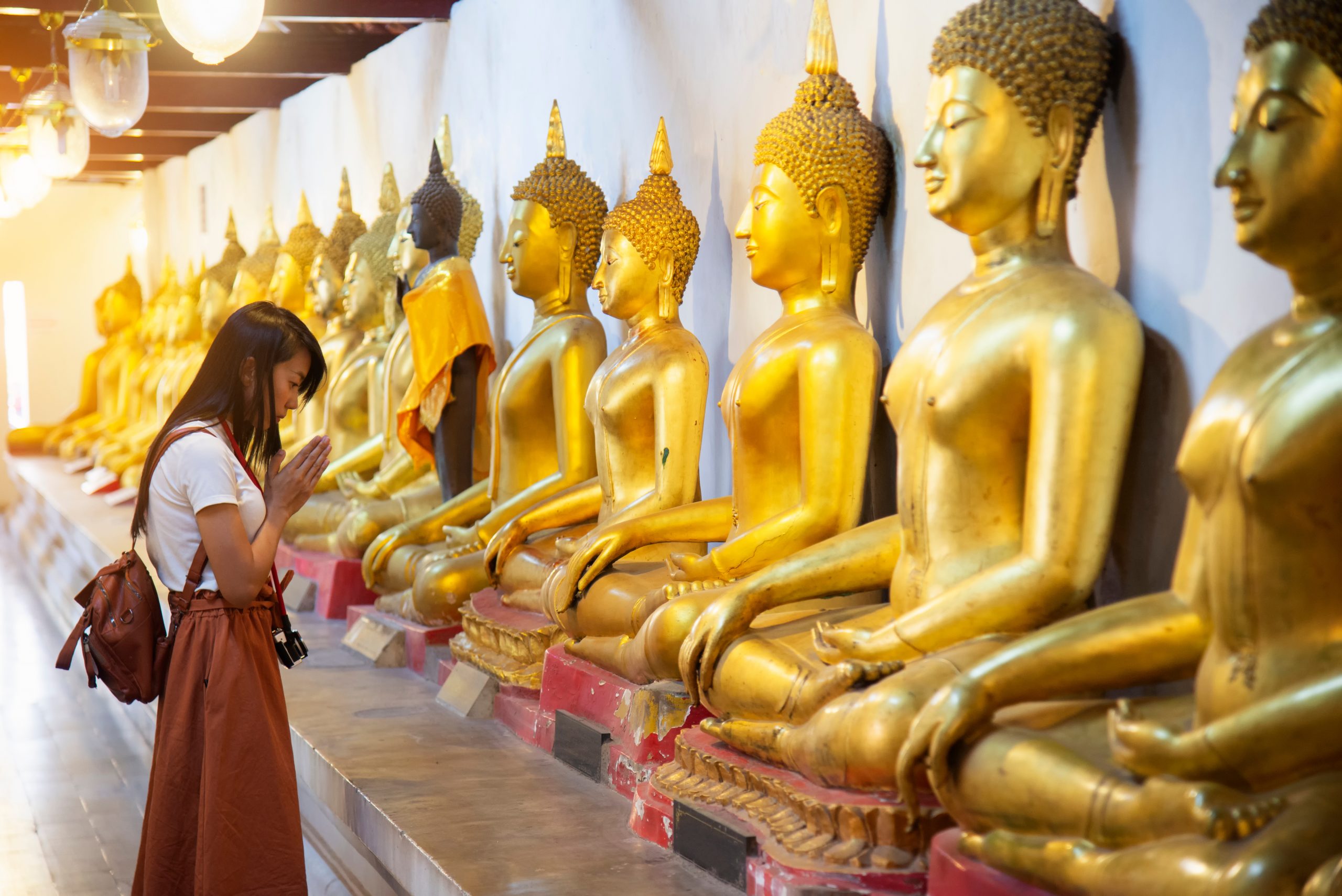

If people work towards understanding, they would have a better life with no suffering.
The Eightfold Path
Buddha said people must understand what is wrong with their lives before they can “mend” their lives. Buddha also said that people must follow the Eightfold Path to achieve nirvana.
- Have the right insight. Understand the Four Noble Truths, the law about karma and reincarnation (rebirth).
- Have good thoughts. Think with love for other people, give without thinking about receiving something in return.
- Speak well. Speak truthfully, do not talk back, lie or gossip.
- Take the right actions. Follow the five rules of life in Buddhism. Which are:
- To refrain from killing
- To refrain from stealing
- To refrain from adultery
- To refrain from lying
- To refrain from intoxication
- Follow the right way of living. To have honest work and earn money the right way, not by stealing, killing or cheating.
- To make the effort. Work hard and put effort into becoming a better and wiser person.
- Have good attention. Train your brain to not think about other things when you are doing something, and think only of that you’re doing.
- Have good concentration. Train yourself into finding peace and be stronger in your heart and in your thoughts.
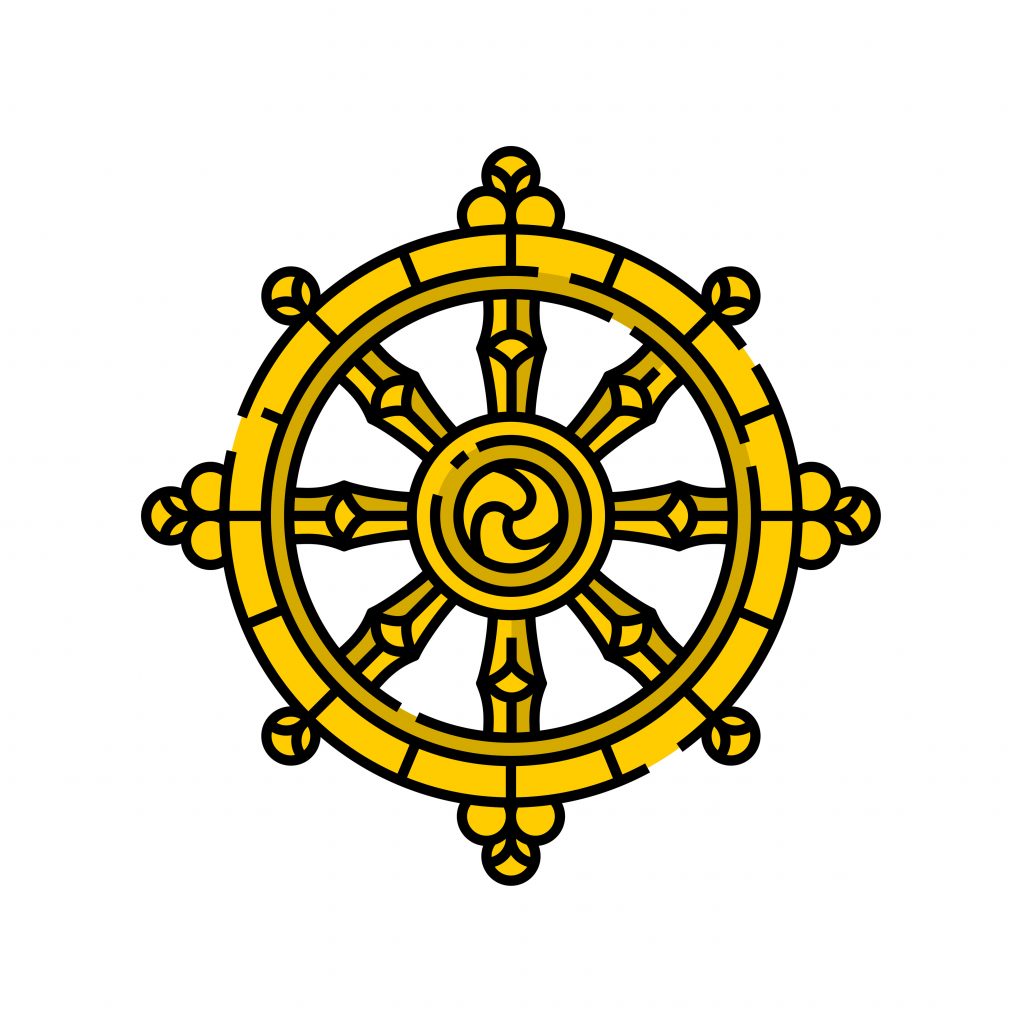
Texts and symbols
There are plenty of holy scriptures and texts in Buddhism. Those texts concern Buddha’s life and his teachings. Buddha’s teachings were first presented orally, from teacher to student but in order to avoid the texts getting lost, it became necessary to write them down.
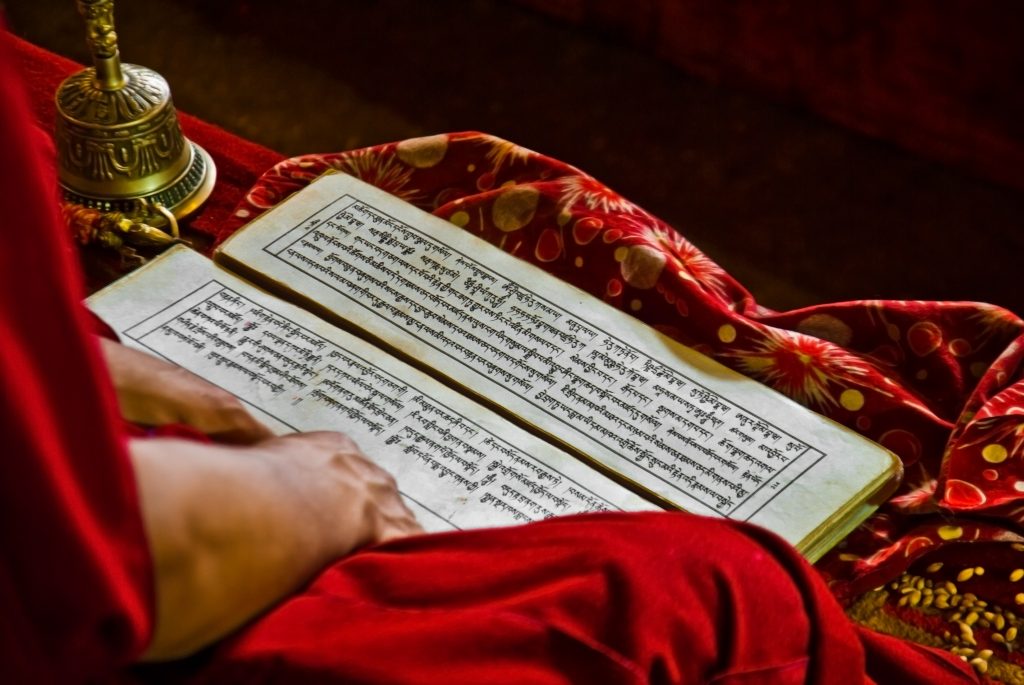
In Buddhist temples we commonly find large Buddha statues, and many of them are highly valuable pieces of art.

In many temples one can find altars with Buddha statues. The ritual of puja is often conducted there. Puja means worship of Buddha in the form of song, meditation and offering of flowers and incense.
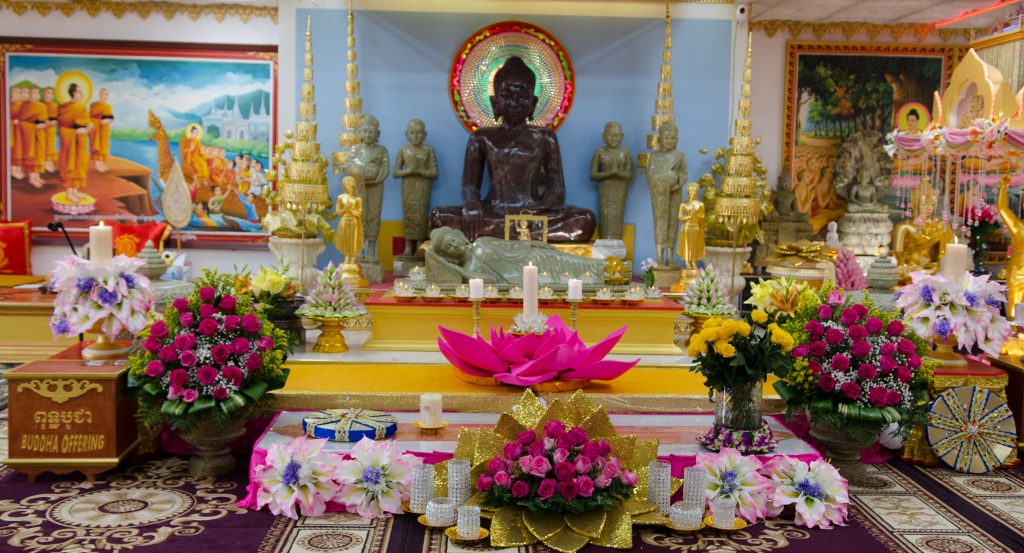
Most Buddhists have a Buddha figure at home. They commonly light candles and put flowers in front of the Buddha figure. Some Buddhists meditate on a daily basis.
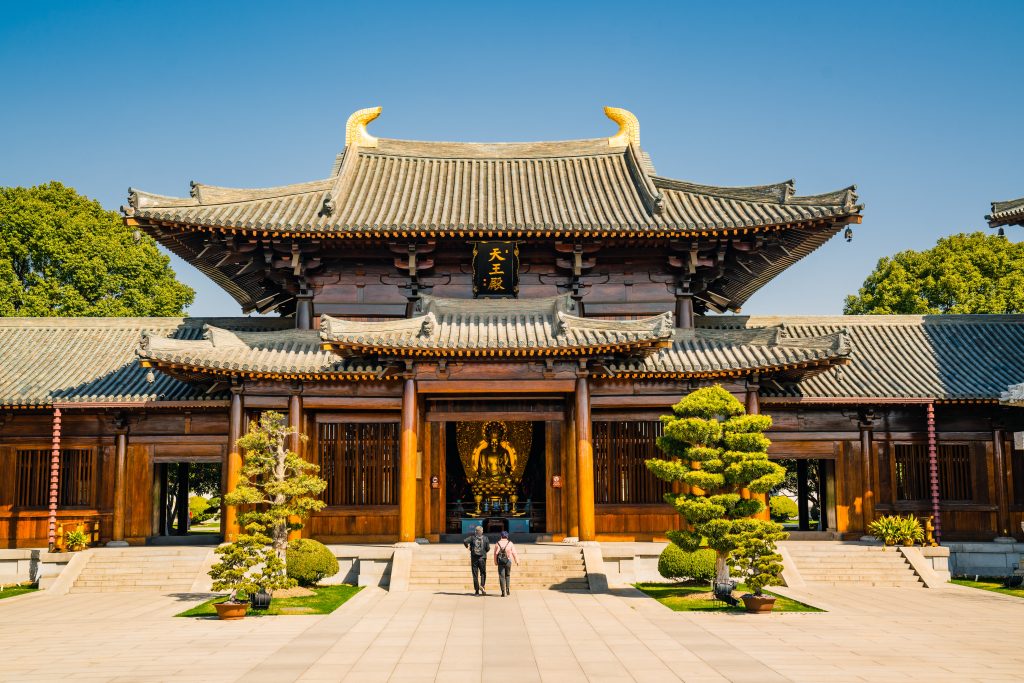
Monks and nuns
Monks and nuns are experts in Buddhism. They read the holy scriptures frequently. They meditate, and they teach in Buddha’s teachings. They don’t own many things, only what they need. They survive on food and gifts given to them by other people.
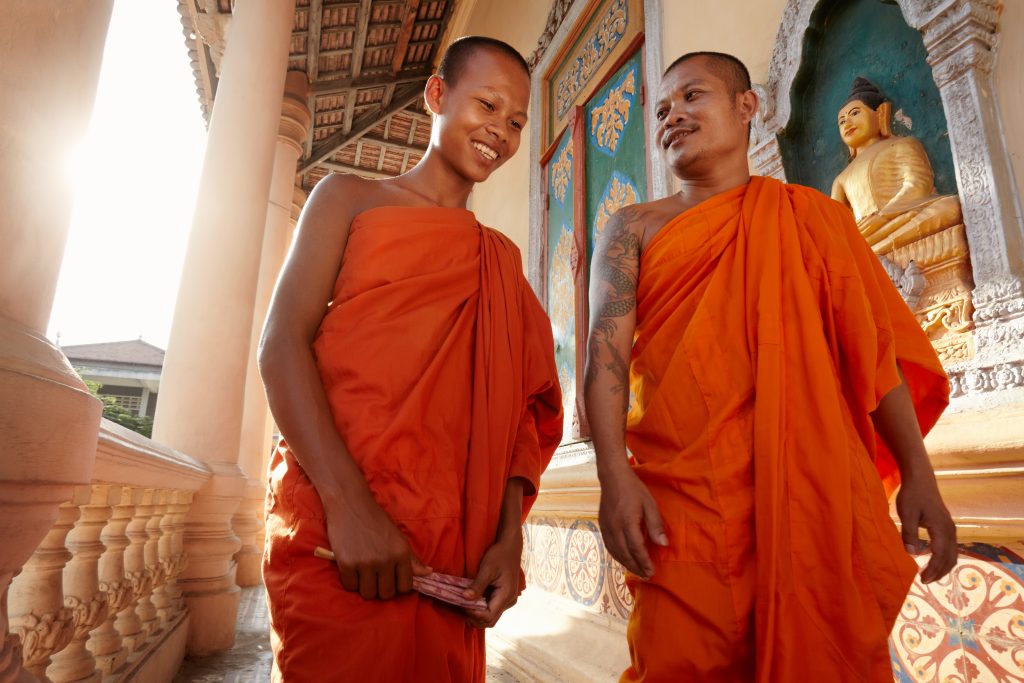
Learn more about Buddhism
- Tekstene er utviklet av Veilederkorpset i Stavanger og etter avtale tilrettelagt, bearbeidet og oversatt av morsmål.no
- Alle bilder er hentet fra Adobe Stock

